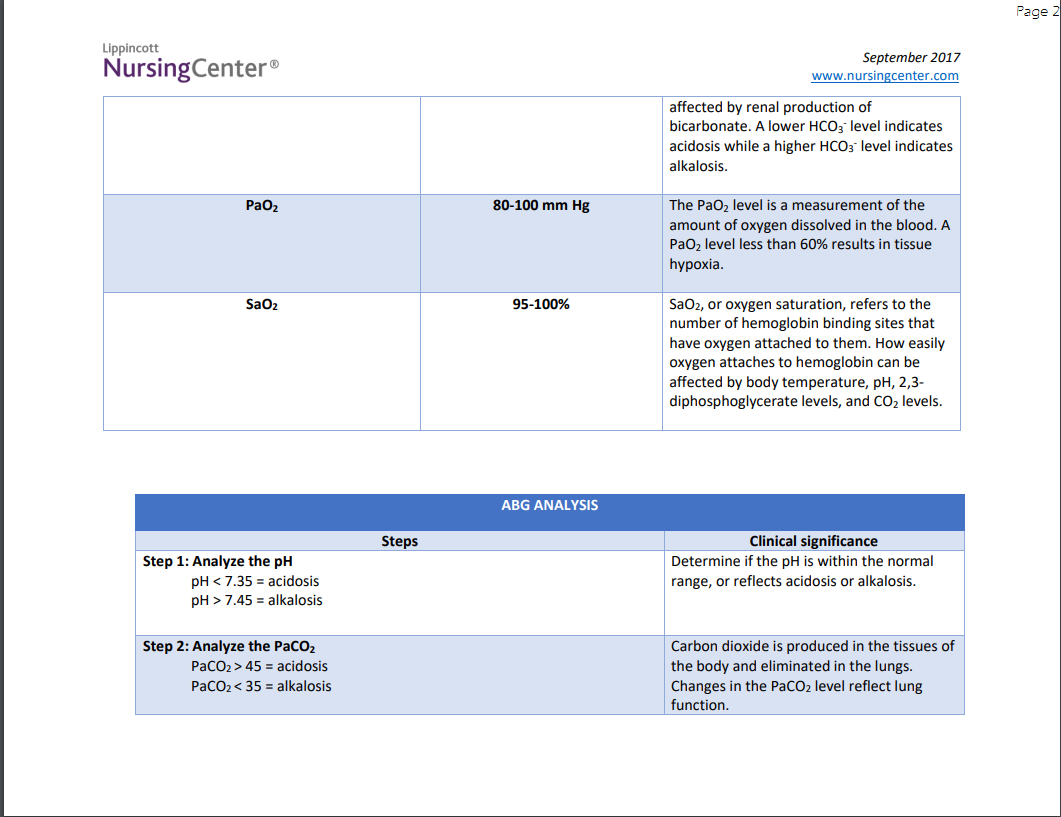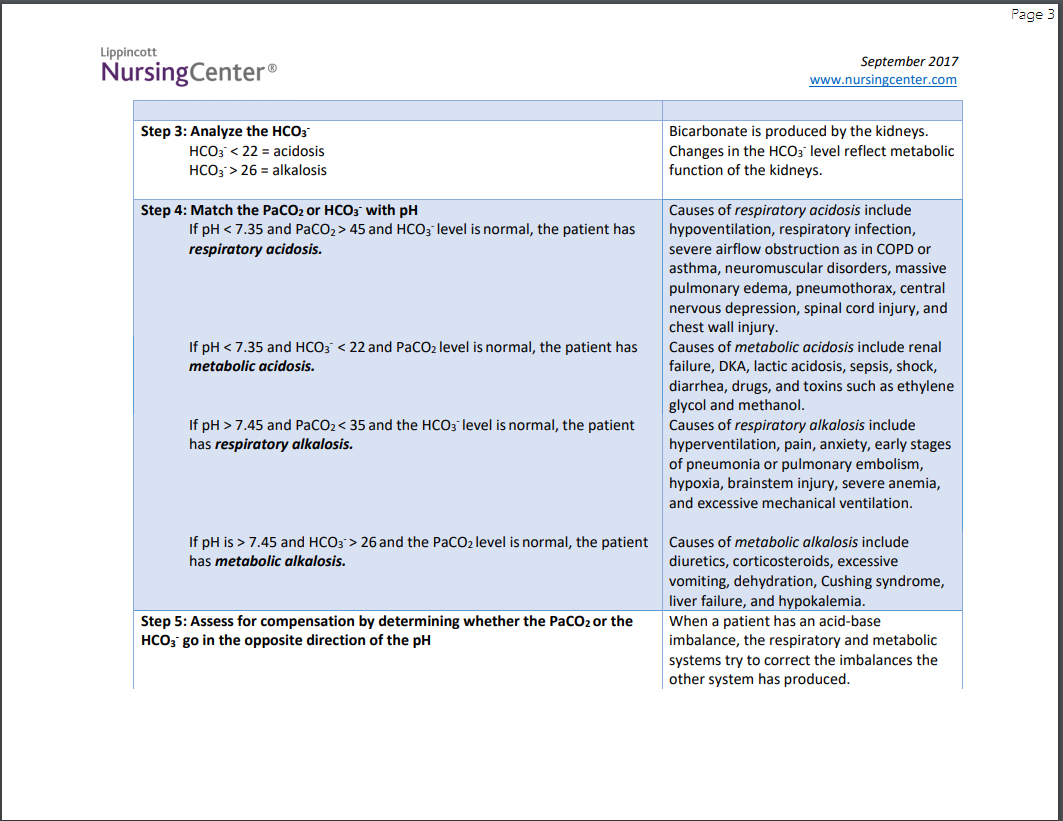





 What Is an Arterial Blood Gas Test?
What Is an Arterial Blood Gas Test?
 An arterial blood gas (ABG) test measures oxygen and carbon dioxide levels in your blood. It also measures your body’s acid-base (pH) level, which is normally balanced when you are healthy.
You may get this test if you are in the hospital because you have a serious injury or illness.
The test gives your doctor clues about how well your lungs, heart, and kidneys are working. You’ll probably get other tests along with it, too.
Every cell in your body needs oxygen to live. When you inhale and exhale, your lungs move oxygen into your blood and push carbon dioxide out. That process, called gas exchange, gives energy to the body and expels waste.
But if you have a hard time breathing or an illness that affects your lungs, your doctor may use an arterial blood gas (ABG) test to help check on what’s happening with your lungs and other organs.
An arterial blood gas (ABG) test measures oxygen and carbon dioxide levels in your blood. It also measures your body’s acid-base (pH) level, which is normally balanced when you are healthy.
You may get this test if you are in the hospital because you have a serious injury or illness.
The test gives your doctor clues about how well your lungs, heart, and kidneys are working. You’ll probably get other tests along with it, too.
Every cell in your body needs oxygen to live. When you inhale and exhale, your lungs move oxygen into your blood and push carbon dioxide out. That process, called gas exchange, gives energy to the body and expels waste.
But if you have a hard time breathing or an illness that affects your lungs, your doctor may use an arterial blood gas (ABG) test to help check on what’s happening with your lungs and other organs. Why You Get It?
Why You Get It?
 Your doctor may request an arterial blood gas test to:
Your doctor may request an arterial blood gas test to:
 Check for severe breathing and lung problems such as asthma, cystic fibrosis, or chronic obstructive pulmonary disease (COPD)
Check for severe breathing and lung problems such as asthma, cystic fibrosis, or chronic obstructive pulmonary disease (COPD)
 Check how treatments for your lung problems are working
Check how treatments for your lung problems are working
 Check if you need extra oxygen or other help with breathing
Check if you need extra oxygen or other help with breathing
 Check your acid-base balance if you have heart or kidney failure, uncontrolled diabetes, severe sleep problems, severe infections, or have had a drug overdose
Check your acid-base balance if you have heart or kidney failure, uncontrolled diabetes, severe sleep problems, severe infections, or have had a drug overdose What Happens During the Test?
What Happens During the Test?
 You are likely to have an arterial blood gas test in a hospital, but your doctor may be able to do it in his office.
You are likely to have an arterial blood gas test in a hospital, but your doctor may be able to do it in his office.
 What Is an Arterial Blood Gas Test?
What Is an Arterial Blood Gas Test?
 You are likely to find collecting blood from an artery hurts more than drawing it from a vein, because arteries are deeper than veins and there are sensitive nerves nearby. You may have a few minutes of discomfort during or after the test.
You are likely to find collecting blood from an artery hurts more than drawing it from a vein, because arteries are deeper than veins and there are sensitive nerves nearby. You may have a few minutes of discomfort during or after the test.
 What Do the Results Mean?
What Do the Results Mean?
 Results of your arterial blood gas test usually are available in less than 15 minutes. But your doctor cannot diagnose a problem with an arterial blood gas test results alone. So you’ll probably get other tests, too.
Results of your arterial blood gas test usually are available in less than 15 minutes. But your doctor cannot diagnose a problem with an arterial blood gas test results alone. So you’ll probably get other tests, too.  Your lungs are getting enough oxygen
Your lungs are getting enough oxygen
 Your lungs are removing enough carbon dioxide
Your lungs are removing enough carbon dioxide
 Your kidneys are working properly
Your kidneys are working properly
 FACEBOOK PAGE
FACEBOOK PAGE 
 Time and Date: 11/03/25
Time and Date: 11/03/25


 Now Online: 1
Now Online: 1
 Your IP: 216.73.216.172
Your IP: 216.73.216.172
 Daily Visit: 1
Daily Visit: 1
 Monthly Monitoring: 1
Monthly Monitoring: 1
 Total Visitor: 259
Total Visitor: 259
 Subscribers: 2
Subscribers: 2
 Members: 0
Members: 0
 Guestbook: 1
Guestbook: 1